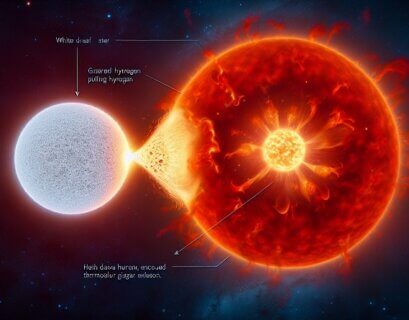Key Takeaways
- Atomic physics is the study of the behavior of atoms and their constituent particles.
- The development of atomic physics can be traced back to the discovery of the electron by J.J. Thomson in 1897.
- Theories and models in atomic physics include the Bohr model, quantum mechanics, and the Schrödinger equation.
- The structure of an atom consists of a nucleus made up of protons and neutrons, surrounded by electrons in energy levels.
- The behavior of electrons in atoms is described by their energy levels and the electromagnetic spectrum, which includes visible light, radio waves, and X-rays.
Table of Contents
ToggleHistorical Development of Atomic Physics
The study of atoms and their properties has a long and fascinating history. In ancient times, philosophers such as Democritus proposed that matter was made up of indivisible particles called atoms. However, it wasn’t until the late 19th century that experimental evidence began to support this idea. One of the key experiments in the development of atomic physics was conducted by J.J. Thomson in 1897. Using a cathode ray tube, Thomson discovered that cathode rays were composed of negatively charged particles, which he called electrons. This discovery revolutionized our understanding of atoms and laid the foundation for further investigations into their structure. Another important experiment in atomic physics was conducted by Ernest Rutherford in 1911. Rutherford’s gold foil experiment involved firing alpha particles at a thin sheet of gold foil and observing their deflection. The results of this experiment led Rutherford to propose a new model of the atom, known as the nuclear model. According to this model, atoms consist of a small, dense nucleus surrounded by orbiting electrons. Niels Bohr further developed Rutherford’s model in 1913 by introducing the concept of energy levels and quantized electron orbits. Bohr’s atomic model explained the stability of atoms and provided a framework for understanding their spectral properties. This model was a significant step forward in the field of atomic physics and laid the groundwork for the development of quantum mechanics.Theories and Models in Atomic Physics
Quantum mechanics is the branch of physics that describes the behavior of particles at the atomic and subatomic level. It is one of the most successful theories in modern science and has revolutionized our understanding of the atomic world. Quantum mechanics introduced the concept of wave-particle duality, which states that particles such as electrons can exhibit both wave-like and particle-like properties. One of the key equations in quantum mechanics is Schrödinger’s equation, which describes the wave function of a particle. The wave function contains all the information about the particle’s position, momentum, and energy. By solving Schrödinger’s equation, physicists can determine the allowed energy levels and wave functions for electrons in atoms. Quantum field theory is another important theory in atomic physics. It combines quantum mechanics with special relativity to describe the behavior of particles and fields at high energies. Quantum field theory has been successful in explaining phenomena such as particle interactions and the behavior of elementary particles.The Structure of an Atom
Atoms are composed of three main subatomic particles: protons, neutrons, and electrons. Protons have a positive charge, neutrons have no charge, and electrons have a negative charge. The number of protons in an atom determines its atomic number, while the total number of protons and neutrons determines its mass number. Isotopes are atoms of the same element that have different numbers of neutrons. For example, carbon-12 and carbon-14 are both isotopes of carbon, with carbon-12 having 6 neutrons and carbon-14 having 8 neutrons. Isotopes can have different physical and chemical properties due to their different mass numbers.The Behavior of Electrons in Atoms
Electrons in atoms occupy specific energy levels and orbitals. Energy levels are quantized, meaning that electrons can only occupy certain discrete energy states. Orbitals are regions of space where electrons are most likely to be found. The arrangement of electrons in an atom is described by its electron configuration. This configuration follows a set of rules known as the Aufbau principle, which states that electrons fill the lowest energy levels first before moving to higher energy levels. The Pauli exclusion principle states that no two electrons in an atom can have the same set of quantum numbers, which ensures the stability of atoms.The Electromagnetic Spectrum
 The electromagnetic spectrum is a range of electromagnetic waves that includes radio waves, microwaves, infrared radiation, visible light, ultraviolet radiation, X-rays, and gamma rays. We characterize electromagnetic waves by their wavelength and frequency. Each type of electromagnetic wave has different properties and applications. For instance, communication utilizes radio waves, cooking employs microwaves, and medical imaging utilizes X-rays. Understanding the properties of electromagnetic waves is crucial in many fields, including telecommunications, astronomy, and medicine.
The electromagnetic spectrum is a range of electromagnetic waves that includes radio waves, microwaves, infrared radiation, visible light, ultraviolet radiation, X-rays, and gamma rays. We characterize electromagnetic waves by their wavelength and frequency. Each type of electromagnetic wave has different properties and applications. For instance, communication utilizes radio waves, cooking employs microwaves, and medical imaging utilizes X-rays. Understanding the properties of electromagnetic waves is crucial in many fields, including telecommunications, astronomy, and medicine. Simple Atomic Physics Experiments for Students to Try at Home

Applications of Atomic Physics in Everyday Life
Atomic physics has numerous applications in everyday life. Here are a few examples: 1. Medical imaging: Atomic physics plays a crucial role in medical imaging techniques such as X-rays, CT scans, and MRI scans. These techniques allow doctors to visualize internal structures and diagnose various medical conditions. 2. Nuclear power: Atomic physics plays a central role in the generation of nuclear power. Nuclear reactors utilize regulated nuclear reactions to generate heat, subsequently transforming it into electrical energy. Global electricity generation widely acknowledges this form of energy production as a sustainable and effective energy source, constituting a substantial portion. 3. Atomic clocks: Atomic clocks are extremely accurate timekeeping devices that rely on the vibrations of atoms to measure time. Various applications, such as GPS navigation, telecommunications, and scientific research, actively use them.Nuclear Physics and Radioactivity
Nuclear physics is a branch of physics that deals with the study of atomic nuclei and their interactions. It encompasses the study of nuclear reactions, nuclear decay, and the properties of atomic nuclei. Radioactive decay is a process in which unstable atomic nuclei emit radiation in the form of alpha particles, beta particles, or gamma rays. There are several types of radioactive decay, including alpha decay, beta decay, and gamma decay. Various applications, such as medical imaging, cancer treatment, and dating archaeological artifacts, use radioactive materials. While radiation has many beneficial uses, it can also be dangerous if not handled properly. Exposure to high levels of radiation can cause damage to living cells and increase the risk of cancer. Therefore, it is important to take appropriate safety precautions when working with radioactive materials.Future of Atomic Physics Research and Discoveries
Researchers in atomic physics rapidly evolve the field, continuously making new discoveries and breakthroughs. Current research in atomic physics focuses on areas such as quantum computing, precision measurements, and the study of fascinating atoms.Quantum Computing
Quantum computing is an emerging field that aims to harness the principles of quantum mechanics to perform complex calculations at speeds far beyond what is possible with classical computers. Researchers are exploring ways to manipulate and control individual atoms and particles to build quantum computers that could revolutionize computing technology.Precision measurements
Precision measurements are another area of active research in atomic physics. Scientists are constantly pushing the limits of measurement accuracy to study fundamental constants, test the laws of physics, and develop new technologies. The study of peculiar atoms, such as antimatter atoms and highly excited states of atoms, is also an area of ongoing research. These systems provide unique insights into the fundamental properties of matter and could lead to new applications in fields such as energy production and medicine. While atomic physics research presents many exciting opportunities, it also comes with its challenges. One of the main challenges in atomic physics is the complexity of the systems being studied. Multiple particles interact with each other through electromagnetic forces to compose atoms, rendering their behavior difficult to predict and understand. Another challenge in atomic physics research is the need for advanced experimental techniques and equipment. Many experiments in atomic physics require sophisticated instruments such as particle accelerators, lasers, and high-resolution detectors. Developing these tools and techniques requires significant investment and expertise. Despite these challenges, the future of atomic physics research looks promising. Advances in technology and computational power are enabling scientists to tackle increasingly complex problems and make new discoveries. Atomic physics will continue to play a crucial role in advancing our understanding of the physical world and driving technological innovation.Conclusion
You might find this article on Entech Online intriguing. It explores the various opportunities that individuals with a background in chemistry have and highlights the potential paths that they can pursue. From research and development to pharmaceuticals and environmental science, this article provides valuable insights into the diverse career options that await chemistry graduates. Check it out here!FAQs
What is atomic physics?
Atomic physics is the branch of physics that deals with the study of atoms, their structure, properties, and behavior.What are atoms?
Atoms are the basic building blocks of matter. They are the smallest unit of matter that retains the properties of an element.What is the structure of an atom?
An atom consists of a nucleus, which contains protons and neutrons, and electrons that orbit around the nucleus.What are protons, neutrons, and electrons?
Protons have a positive charge and are in the atom’s nucleus. Neutrons have no charge and are also in the nucleus. Electrons have a negative charge and orbit the nucleus.What is atomic number?
Atomic number is the number of protons in the nucleus of an atom. It determines the identity of an element.What is atomic mass?
Atomic mass is the total mass of an atom, which is the sum of the masses of protons, neutrons, and electrons.What is an isotope?
Isotopes are atoms of the same element that have the same number of protons but different numbers of neutrons.What is nuclear energy?
Nuclear energy comes from nuclear reactions like fission and fusion. These reactions release energy.What is radioactivity?
Radioactivity is the spontaneous emission of radiation from the nucleus of an atom. It occurs when the nucleus is unstable and undergoes radioactive decay.Author
-

Until 2023, Dr. Charudatta S Pathak held multiple academic positions, including lecturer, assistant professor, professor, dean, principal, director, and vice chancellor at public and private universities across India. From 2008 to 2010, he held the position of project lead in the CAE department at a European multinational corporation. Throughout his 28-year professional experience, he observed a requirement for reliable publications aimed at youngsters in grades 8 to 12, specifically for early-stage career planning. He initiated the establishment of ENTECH Digital Magazine, a complimentary periodical released on a monthly basis, accessible via entechonline.com and magzter.com. Teenagers with a keen interest in Science, Technology, Engineering, and Mathematics (STEM) and aspiring to pursue professional paths in these domains can consider reading ENTECH Digital Magazine.
View all posts










